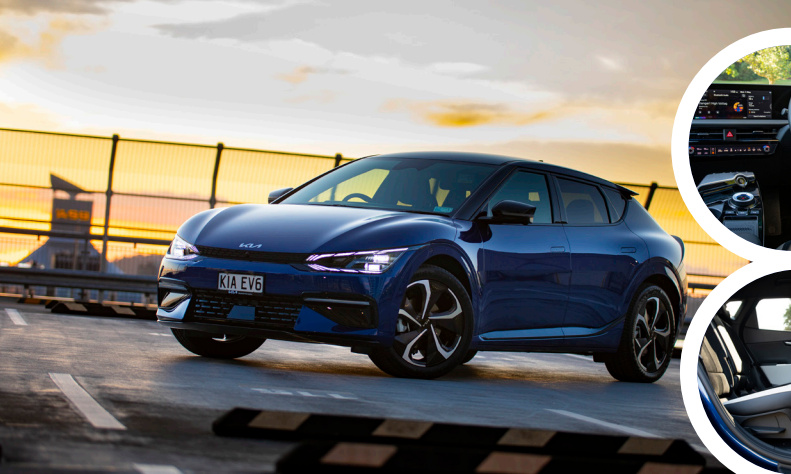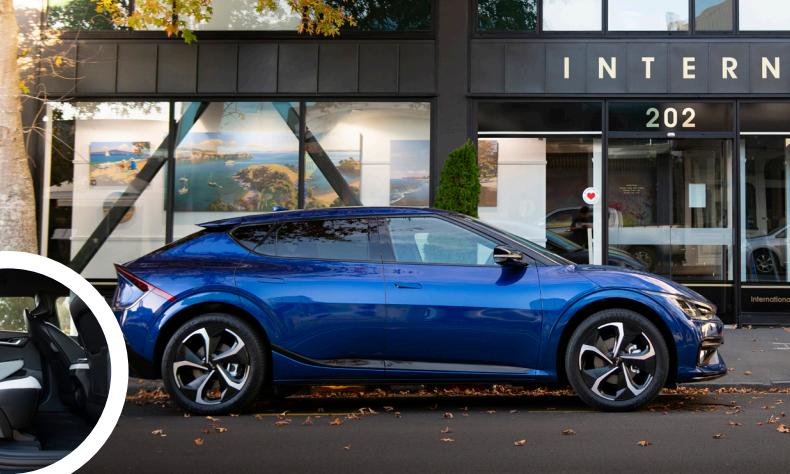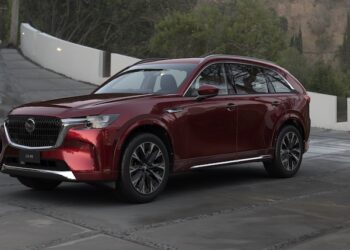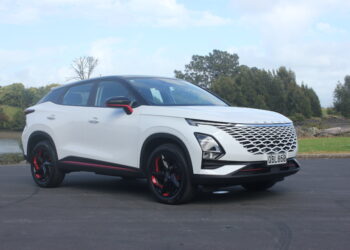
Kia’s progression from upstart to the pointy end of the mainstream vehicle market is well documented.
By and large, Kia has completed the global market takeover it had hoped for in the early 2000s. But there’s no sleep for the wicked. Kia has pressed “go” on its next market goals.
The brand’s current line-up, almost all of which have had a vast makeover in the last two years, underlines a desire to be considered more upmarket than key rivals.
On a longer timeline it aims to position itself as an electric vehicle powerhouse, not unlike sister company Hyundai.
The all-new EV6 is Kia’s attempt to hit two birds with one stone. It takes over from the Stinger as the brand’s halo performance model, while also leading its budding electric vehicle range. Kia New Zealand isn’t messing around, either.
The EV6’s pricing is aggressive, with two models priced below the Government’s $80,000 Clean Car Discount threshold. Many Kia products have been labelled the manufacturer’s “most important car yet”. Maybe that applies in this case, too.
Though it’s much bigger and sits in a different vehicle segment, the EV6’s pricing puts it toe to toe with New Zealand’s most popular electric car, the Tesla Model 3.
The line-up starts at $72,990 for the 58kWh Air standard-range, undercutting the cheapest Model 3 by $2000. The Air long-range, which gets a 77.4kWh battery and quoted range of 528km, is priced from $78,990.
Our test car is the $106,990 GT-Line (the flagship until the GT arrives in 2023). It uses the 77.4kWh battery, but gets a beefed-up powertrain, all-wheel drive, and a lengthy list of tech toys.
Range takes a hit, dropping to 506km, but this is premium plug-in fare. Dimensionally, the EV6 is a bit of an oddball thanks to its E-GMP platform and its enormous 2900mm wheelbase. To make this number happen the wheels are pushed as far into the corners as possible.
Inside, the air-conditioning module has been moved in front of the firewall and there’s no transmission tunnel, meaning a flat floor for those in the front.
That adds up to one of the roomiest interior spaces in any passenger car. Rear legroom is especially impressive, with some of my passengers able to stretch their legs out almost fully without being impeded by the front seat.
The “Zero Gravity” front seat feature, which allows the front seats to fold into a “business class-style” recline while you’re stationary, are sublime in practice.
There’s much more car here than the Model 3 offers. For less money, too. This layout philosophy leads to a design that looks unorthodox from some angles.
Overhangs at each end are small, with the front overhang leading to a fascia that looks a little smushed together from some angles.
Its cabin design is more convincing. It shares plenty of DNA with other Kias but packs enough sharp lines and angles to bring a more sci-fi feel. Repeated diagonal lines tie together the top of the dash, the ambient lighting, and the centre armrest.

There’s a two-spoke steering wheel, because they’re back in fashion, and the floating centre console’s piano black plastic is pretty but acts as a dust bowl.
The cabin’s heart is undoubtedly the vast curved display screen. Made of dual 12.3-inch screens, it uses Kia’s latest infotainment interface.
The clarity and quality of the two screens are excellent, and both are cleanly laid out and fairly easy to use.
The lack of wireless Android Auto or Apple CarPlay seems like a slight lost opportunity, and the satnav interface could be more straightforward.
But the EV6 makes up for it with features like the Surround View 360-degree camera, augmented reality head-up display, and vehicle-to-load charging capabilities. The last-mentioned allows it to channel up to 3.6kW or 220V AC power to charge or run other electric devices.
V2L is one of several innovations the E-GMP platform can boast about. Arguably more important is its 800V charger compatibility.
Plugged into one of the growing number of hyper-chargers around the country, the EV6 can be charged from 10% to 80% in a brisk 15 minutes. And what about that range? Though we didn’t surpass the magic 500km barrier, we did manage to get almost 450km out of the EV6 on a single charge.
That’s impressive, especially given that a large chunk of our time with the car was spent driving on motorways and countryside B-roads.
Some of this credible range figure stems from Kia’s i-Pedal. It’s the brand’s name for its most severe regenerative braking setting, and it deserves a name because it’s one of a select few systems capable of slowing a car to a complete stop.
That makes the EV6 a true single pedal car, one that you can drive to the shops and back using just one pedal. Once you get used to the weight it applies and the way it applies it, it becomes quite predictable and intuitive. Inevitably, it’s plenty quick as well.
Kia says the EV6 can hit 100km/h in just over five seconds, but in practice it feels even quicker. Off the mark, the EV6 displays noticeably less lurch than rivals.
The Continental rubber provides acres of grip to a platform that already hosts plenty of mechanical grip thanks to its low centre of gravity. Lob the EV6 at a corner, and it gobbles it up without fuss.
Drivers seeking an ultimate thrill would probably have a little more fun in lighter platforms like the Model 3, but the EV6 isn’t far behind. The EV6 can be seen as a slam dunk for Kia and a guiding light forward for the marque as it takes on more widespread electrification.
But, before we crack open the bubbly there’s an elephant in the room worth discussing. The EV6 is a direct cousin to the Hyundai Ioniq 5. They share a platform, most of their drivetrains, and get similar equipment. In spite of the amount of mechanical overlap between the two, they’re quite different.
The Ioniq 5 is a proud SUV, with its squared off proportions. The EV6 feels less resolved. Kia classifies it as an SUV, but it clearly also wants to be considered as a sports sedan.
It’s no accident that its silhouette draws it closer to the likes of the Model 3 and Polestar 2 than the boxier Ioniq 5. This won’t matter to most buyers.
They’ll vote based on looks and value (noting that the EV6 is cheaper, particularly if you want the bigger battery) without giving this stuff a second thought.
And at the end of the day, there’s nothing wrong with that. Both are stellar cars, and both mark a new era for the Korean car industry.








